Thingiverse
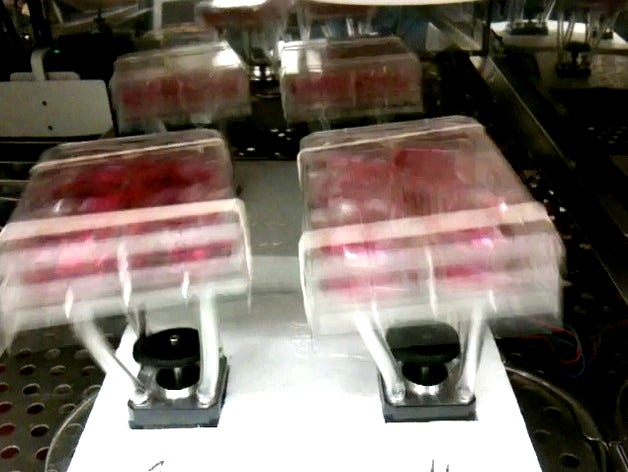
Open Source Orbital Shaker by jmil
by Thingiverse
Last crawled date: 2 years, 12 months ago
Here is my entry to the Open Call for Open Science Equipment Contest, detailed here:http://thecitizensciencequarterly.com/2010/11/25/open-call-for-open-science-equipment/
Start with the video to see what this is all about:http://www.youtube.com/watch?v=1d4_SQBTFjghttp://vimeo.com/17497511
Download the .zip file to get everything, or get the individual pieces you want.
This is an open-source orbital shaker for mammalian cell and tissue culture and for bench-top science. The orbital shaker fits inside a standard 37 ºC/5% CO2 cell incubator and puts out no heat so you can load up the incubator full of these things. We have used them for 2 weeks now and the design is very simple, inexpensive, and scaleable. Our cells are growing happily in these shakers.
Orbital shakers are typically ~$1,500 and even more expensive if you need one that is designed for a cell incubator so that it will not put out any heat (incubators only have heating and not cooling functions, so if equipment puts out too much heat it will kill all the cells in the incubator).
To accomplish this goal I used an arduino microcontroller, Pololu stepper motor controller, and an inexpensive stepper motor. A DC motor could have been used but it is very difficult to control the rotational speed with high accuracy since the DC motor rotation speed varies based on load. Instead I used a $10 stepper motor and a pololu stepper motor controller at 1/16th stepping.
I used a NEMA 17 motor. Lin Engineering 4218L-01-11 works very well. It can do 75 oz-in and has lots of torque so it can be run at 1/16th stepping and at low current without generating any heat.
I used 3D printed parts I designed and printed with a MakerBot to make the off-axis motor connector and bearing plate holder.
Nuts and bolts are used to finish the design.
Stepper motors are known to put out enormous vibrations, so part of the design also required rubber tubing stand-offs which smooth out the motion of the orbital shaker and also dampen all of the motor vibration.
Coding the stepper motor rotational speed was straightforward once we calibrated the correct delay time between motor steps. We typically run the shakers at 2 Hz (2 revolutions per second) but can easily get anywhere from 0.2-5 Hz with the current setup.
Full sources are available on Thingiverse, posted today.
If you want to buy a commercially available orbital shaker you're going to spend ~$1500.00 USD.
Cost Breakdown for Open Source Orbital Shaker:
First shaker minimum requirements to get started:
ATX Power Supply $30
Arduino $30
USB plug and long cable $20
Motor $10
Bearing $1
Tubing $1
Motor controller $40
Wire $4
Nuts and Bolts $5
3D printed parts $0.50
Total: $141.50
Additional shakers, incremental requirements:
Motor $10
Bearing $1
Tubing $1
Motor controller $40
Wire $4
Nuts and Bolts $5
3D printed parts $0.50
Total Incremental cost for each additional shaker: $61.50
Currently we have 4 shakers being driven concurrently with this setup (one set of electronics).
And here (attached) is a video of them working in our incubator!
My design would benefit from winning this contest by being able to design a lasercut case for the electronics and make a kit that could be purchased directly by customers. I would make the 3D printed parts lasercut instead to make production easier.
All of these parts are sourceable from SparkFun and Ponoko. The motor controller I used is not from SparkFun but SparkFun has many that would work for this application, or they may be willing to sell the controller that I am using (from www.JohnYang.com). John Yang's controller is available from MakerGear.com.
This orbital shaker is likely to have numerous applications in bench-top science in addition to in vitro cell culture.
Start with the video to see what this is all about:http://www.youtube.com/watch?v=1d4_SQBTFjghttp://vimeo.com/17497511
Download the .zip file to get everything, or get the individual pieces you want.
This is an open-source orbital shaker for mammalian cell and tissue culture and for bench-top science. The orbital shaker fits inside a standard 37 ºC/5% CO2 cell incubator and puts out no heat so you can load up the incubator full of these things. We have used them for 2 weeks now and the design is very simple, inexpensive, and scaleable. Our cells are growing happily in these shakers.
Orbital shakers are typically ~$1,500 and even more expensive if you need one that is designed for a cell incubator so that it will not put out any heat (incubators only have heating and not cooling functions, so if equipment puts out too much heat it will kill all the cells in the incubator).
To accomplish this goal I used an arduino microcontroller, Pololu stepper motor controller, and an inexpensive stepper motor. A DC motor could have been used but it is very difficult to control the rotational speed with high accuracy since the DC motor rotation speed varies based on load. Instead I used a $10 stepper motor and a pololu stepper motor controller at 1/16th stepping.
I used a NEMA 17 motor. Lin Engineering 4218L-01-11 works very well. It can do 75 oz-in and has lots of torque so it can be run at 1/16th stepping and at low current without generating any heat.
I used 3D printed parts I designed and printed with a MakerBot to make the off-axis motor connector and bearing plate holder.
Nuts and bolts are used to finish the design.
Stepper motors are known to put out enormous vibrations, so part of the design also required rubber tubing stand-offs which smooth out the motion of the orbital shaker and also dampen all of the motor vibration.
Coding the stepper motor rotational speed was straightforward once we calibrated the correct delay time between motor steps. We typically run the shakers at 2 Hz (2 revolutions per second) but can easily get anywhere from 0.2-5 Hz with the current setup.
Full sources are available on Thingiverse, posted today.
If you want to buy a commercially available orbital shaker you're going to spend ~$1500.00 USD.
Cost Breakdown for Open Source Orbital Shaker:
First shaker minimum requirements to get started:
ATX Power Supply $30
Arduino $30
USB plug and long cable $20
Motor $10
Bearing $1
Tubing $1
Motor controller $40
Wire $4
Nuts and Bolts $5
3D printed parts $0.50
Total: $141.50
Additional shakers, incremental requirements:
Motor $10
Bearing $1
Tubing $1
Motor controller $40
Wire $4
Nuts and Bolts $5
3D printed parts $0.50
Total Incremental cost for each additional shaker: $61.50
Currently we have 4 shakers being driven concurrently with this setup (one set of electronics).
And here (attached) is a video of them working in our incubator!
My design would benefit from winning this contest by being able to design a lasercut case for the electronics and make a kit that could be purchased directly by customers. I would make the 3D printed parts lasercut instead to make production easier.
All of these parts are sourceable from SparkFun and Ponoko. The motor controller I used is not from SparkFun but SparkFun has many that would work for this application, or they may be willing to sell the controller that I am using (from www.JohnYang.com). John Yang's controller is available from MakerGear.com.
This orbital shaker is likely to have numerous applications in bench-top science in addition to in vitro cell culture.
Similar models
thingiverse
free

OpenOrbital - parametric orbital shaker by theosanderson
...in an incubator with variable-speed control panel on the outside.
view the animation in openscad if you want to see how it works.
thingiverse
free

Orbital shaker for plates by theosanderson
...eosanderson
thingiverse
an orbital shaker for plates - just put a stepper motor in the box. https://youtu.be/jwwpajtstp8?t=2m37s
grabcad
free

Big Easy Driver Sparkfun
...e in a project to design a casing for a stepper motor tester
for more info check out >https://www.sparkfun.com/products/12859
3dwarehouse
free

rose firefighter design
...dwarehouse
using my current batteries, and the current motor controller, pololu standard wheels, trying for smaller firefighter.
thingiverse
free

Easy Stepper Housing by Printcontrol
...drive and test stepper motors with pololu stepper drivers
i left the pololu acess- and removable e.g. to adjust the vrev
have fun
thingiverse
free

Nema 17 Stepper Motor Stator and Armature Plate by mathcodeprint
...uses a 625zz bearing on one side and a similary sized bushing on the other. i am putting this...
3dwarehouse
free

EasyDriver v3 Stepper Motor Driver ROB-08368
...easydriver v3 stepper motor driver rob-08368
3dwarehouse
easydriver stepper motor driver from sparkfun electronics #sparkfun
thingiverse
free

Stepper motor speed control box. by Galane
...y crookedly mounted heat sinks.
you'll probably have to push the big diode a bit towards the knob side to get the top to fit.
thingiverse
free

Model for Pololu A4988 Stepper Motor Driver Carrier with Voltage Regulator by kdtop3
...n other designs when creating a part to hold this.
there are parameters to hide the pins, or show them above or below the board.
thingiverse
free

Rotary Table Stepper Motor Adapter by w3woody
...s to 3d print a support structure for holding a display, keypad, arduino and stepper motor board together to control the stepper.
Jmil
thingiverse
free

BrainyWalt by jmil
...brainywalt by jmil
thingiverse
what happens when you fuse a 3d brain model with walt's head? brainywalt!
thingiverse
free

Human Brain by jmil
...human brain by jmil
thingiverse
this is a human brain i extracted from a public domain mri dataset from slicer3.4.
thingiverse
free

retopologize testing for cyborg beast by jmil
...retopologize testing for cyborg beast by jmil
thingiverse
left palm retopologize test. cyborg beast v1.3
thingiverse
free

A-Mazing Box by jmil
... my sliced file, settings are visible in the file because it has comments turned on in this gcode file.
layers look okay to me...
thingiverse
free

Dice (6-sided Die) by jmil
...
grabbed the .blend from here:http://wiki.blender.org/index.php/doc:tutorials/modelling/two_dice
converted to .stl for printing.
thingiverse
free

yoda lite 100 mm tall by jmil
...yoda lite 100 mm tall by jmil
thingiverse
posted for sound for slic3r bug check with:https://gist.github.com/1653024
thingiverse
free

PiggyBank by jmil
... followed this tutorial but used blender instead:http://www.oktutorials.com/3d-studio-max-tutorials/modeling/smooth-piggy-bank-p1
thingiverse
free

Octopus Frisbee by jmil
... you hurl him through the air.
anyone that can add a good, printable scarf and aviators to the original file will get $5 from me.
thingiverse
free

rpmify with Python by jmil
...o run, such as 20.
the goal is to process your gcode file one line at a time and replace pwm with rpm
m108 s255 --> m108 r20.0
thingiverse
free

Wireframe Voroni-like Meshing by jmil
... get smooth junctions. this makes surfaces reminiscent of voroni-algorithm subdivisions of surfaces. very useful for 3d printing.
Shaker
archibase_planet
free

Shaker
...shaker
archibase planet
shaker bar equipment
cocktail shaker - 3d model for interior 3d visualization.
3d_ocean
$8

The Shaker
...e formats included in this package are: .max; .3ds; .obj; materials are ready to use in vray. if you have some questions regar...
3d_ocean
$6

Protein shaker
...protein shaker
3docean
bottle health plastic bottle protein protein shaker shaker water
high poly plastic protein shaker
3ddd
$1

muscletech shaker
...muscletech shaker
3ddd
шейкер , чашка
muscletech shaker cup
turbosquid
$40

shakers
... available on turbo squid, the world's leading provider of digital 3d models for visualization, films, television, and games.
turbosquid
free

shakers
... available on turbo squid, the world's leading provider of digital 3d models for visualization, films, television, and games.
3d_export
$10

Sports shaker
...sports shaker
3dexport
multi-colored plastic sports shaker for training men and women
3d_export
$10

Shaker 3D Model
...shaker 3d model
3dexport
shaker stain bar bartender
shaker 3d model cyberarmy5643388 30464 3dexport
archive3d
free

Shaker 3D Model
... model
archive3d
shaker bar equipment
cocktail shaker - 3d model for interior 3d visualization.
3d_ocean
$6

Salt and Pepper Shakers
...and pepper shakers
3docean
condiments pepper restaurant salt shakers spices tableware
typical restaurant salt and pepper shakers.
Orbital
3ddd
free

Orbit
...ь - orbit 6225
габарит - 1450*400*310
сайт производитель -http://www.garsnas.se/en-gb/products/screens-lamps/orbit-6225
design_connected
$16

Orbital
...orbital
designconnected
modus furniture orbital lounge chairs computer generated 3d model. designed by christophe pillet.
3d_ocean
$5

Benzene Orbitals
...l arrangement. orbitals represent electronic cloud around atoms involved in benzene particle. red-green lobes of p-orbitals cr...
3ddd
$1

Dedon / Orbit
...dedon / orbit
3ddd
dedon
dedon / orbit
3ddd
$1

orbit lamps
...t lamps
3ddd
orbit
new modern orbit lamp.
it is a ceiling lamp, every element is parent father - child, and dummy. easy control.
3ddd
free

Dedon / Orbit
...d
dedon , германия , круглая
dedon orbit daybed
3ddd
$1

Люстра ORBITAL SP10
...люстра orbital sp10
3ddd
orbital
люстра orbital sp10
3ddd
$1

Foscarini Orbital
...foscarini orbital
3ddd
foscarini , orbital
дизайнер ferruccio laviani, 1992 г.
3ddd
$1

Dandelion Orbit Chandelier
...dandelion orbit chandelier
3ddd
dandelion , orbit
dandelion orbit chandelier
3ddd
$1

Orbit Chandelier
...orbit chandelier
3ddd
orbit
manufacturer:
townsend design, usa
www.townsenddesign.net
designer:
patrick townsend
Source
turbosquid
$30

source
...e
turbosquid
royalty free 3d model source for download as ma on turbosquid: 3d models for games, architecture, videos. (1154551)
3d_export
$7

Source
...er software such as blender, 3d max, unity in the preview you will see the model with its respective materials, textures and mesh
design_connected
$13

Master Line Source
...master line source
designconnected
piega master line source computer generated 3d model.
3ddd
$1

SodaStream Source
...sodastream source
3ddd
сифон
designed by yves béhar
сифон компании sourcestream, изготовленный в современном стиле
turbosquid
$199

Demon source files
... available on turbo squid, the world's leading provider of digital 3d models for visualization, films, television, and games.
turbosquid
$99

Water Source Animation
... available on turbo squid, the world's leading provider of digital 3d models for visualization, films, television, and games.
turbosquid
$20

THEATRICAL LIGHT - SOURCE 4
... available on turbo squid, the world's leading provider of digital 3d models for visualization, films, television, and games.
turbosquid
$15

Cross 3D print source model
... 3d print source model for download as max, max, obj, and stl on turbosquid: 3d models for games, architecture, videos. (1680597)
turbosquid
$22

Column capital source 3dsMax 001
...smax 001 3d model for download as max, max, max, obj, and stl on turbosquid: 3d models for games, architecture, videos. (1683199)
3ddd
free

Lite Source LS-21155C-WHT Table Lamps
...le lamps
3ddd
lite source
http://www.lamps-lighting.com/lite-source/ls-21155c-wht.html
3dsmax 2013+2010+obj+.fbx+.3ds
Open
3d_export
free
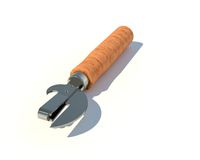
Opener
...r
3dexport
3d model of can opener. its my first work, if u can please show me my mistakes. this 3d model was created in autocad.
3d_export
free

Cap opener
...cap opener
3dexport
handy cap opener, more files/formats here:
3ddd
$1

Кресло, Open Oreon.
...кресло, open oreon.
3ddd
open , oreon
кресло, open oreon.
3d_ocean
$4
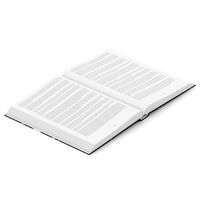
Open Book
...r interior max mental model open ray reading shelf text vray
open hardcover book with unique texture map on front and back cover.
turbosquid
$6
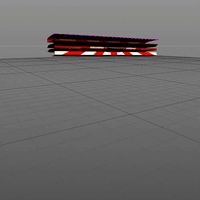
Opening Flag
...squid
royalty free 3d model opening flag for download as c4d on turbosquid: 3d models for games, architecture, videos. (1593555)
turbosquid
$10

Open book
...
royalty free 3d model open book for download as skp and obj on turbosquid: 3d models for games, architecture, videos. (1690781)
turbosquid
$2

bottle opener
...lty free 3d model bottle opener for download as blend and obj on turbosquid: 3d models for games, architecture, videos. (1621201)
turbosquid
$24

Bottle Opener
...free 3d model bottle opener for download as max, obj, and fbx on turbosquid: 3d models for games, architecture, videos. (1300948)
turbosquid
$20
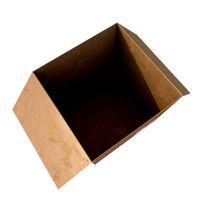
Open Box
...yalty free 3d model open box for download as ma, obj, and fbx on turbosquid: 3d models for games, architecture, videos. (1481218)
turbosquid
$10

Wine Opener
...ty free 3d model wine opener for download as ma, obj, and fbx on turbosquid: 3d models for games, architecture, videos. (1240730)
